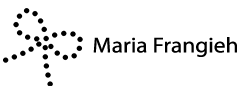John Maynard Keynes (1883- 1946), a revolutionary British economist who debunked neoclassical theories1 in the 30s, gave large importance to the demand and its effects on the overall level of economic activity.
The Keynesian school of thought was based on the ideas of Keynes, also known as demand side economics. He argued that an insufficient aggregate demand can be the cause of high unemployment rates. His theory surged in the 1930s during the Great Depression when the American economy was in a deep downturn. The recommendations of Keynes were adopted by almost all capitalist states in the 1950s and 1960s. The success of the theory began to fade away in the 1970s after large criticisms of the theory by Friedman and others who feared that governments were not able to regulate the business cycle with fiscal policies.
How Does it Work?
The Keynesian theory suggests that the government interferes in the economic cycle of a country. The government will create growth, especially during recessions and depressions by increasing government spending to offset the aggregate demand leading to growth. Governments will have to borrow and spend since the private sector activity (investment or consumption) is slow and growth cannot be reestablished without the intervention of the government.
Keynesian Theory & Lebanon’s Economy: A Wise Combination?
Keynes’ theory suggests that during periods of recession the government will have to borrow money to increase spending and enhance growth. It is not a secret that the Lebanese economy is undergoing a recession period, investments are low, inflation is high economic growth is lagging. Would an intervention (like increasing governmental spending) lead to growth in Lebanon? Let’s do some math. Normally when the government borrows money, it is injected into the economy via investments in infrastructure, healthcare, and education amongst other things. Such investments encourage private investments by conveying a message that the economy is doing well as the government is spending, thus increasing the level of employment in the country, and therefore private consumption, which will turn into economic growth of the country, and higher taxes revenues for the government to repay the debt and reinvest in the productive activities.
The current Lebanese situation: the government is largely indebted; inflation and unemployment rates are both high. If the Lebanese government borrows money, the probability of injecting the money in the economy in a way that offsets aggregate demand (and therefore growth) is very low. The Lebanese government is heavily dominated by corruption; meaning that there is a high probability that the borrowed money will not be used efficiently. In this case, private investments or consumption will be affected but less than needed to offset growth. On the contrary it will increase the inflation rate. The government will have to increase taxes as well to repay the debt. Furthermore, additional borrowing by the government will be channeled to repay old debts. All this adds up to a very clear observation: a Keynesian theory would not be a wise decision to adopt in Lebanon
Plusses + Minuses
Keynes’ theory is well known to increase total demand by increasing government spending, but this theory proved to have drawbacks: inflation, budget deficits and policy lags.
When the government will increase borrowing, it provides excessive stimulus to the economy, increasing prices for consumers and businesses. Central banks will have to increase interest rates to decrease inflation making it more difficult for investors to obtain credit. A crowding out effect will result as the government increased spending hampering thus private investments by higher interest rates.
Budget deficit is another drawback of the demand side economics. When governments borrow money to compensate the decline in the aggregate demand, government deficits and national debt will increase. The government will have to dedicate a part of its revenues to repay the debt, therefore cutting its spending on more productive activities like healthcare, infrastructure, education, and others.
In demand side economics, governments have to regularly take actions (increase spending) in unhealthy economies and decrease their intervention in healthy economies. The time required for the government to recognize the need for government action and the actual implementation of appropriate policy measures represents a policy lag leading to results other than the expected. Another lag appears (months) between implementing the policy itself and the effect of the policy on the economy.
Neoclassical theorists announced that in short and medium terms, free markets will promote full employment.



